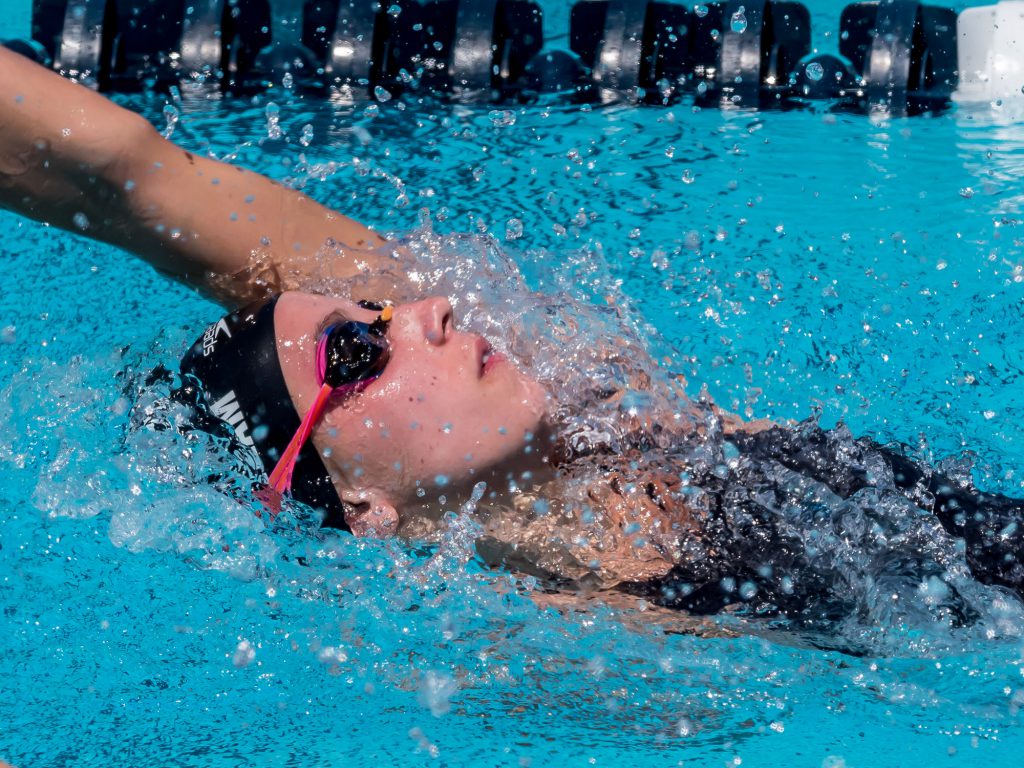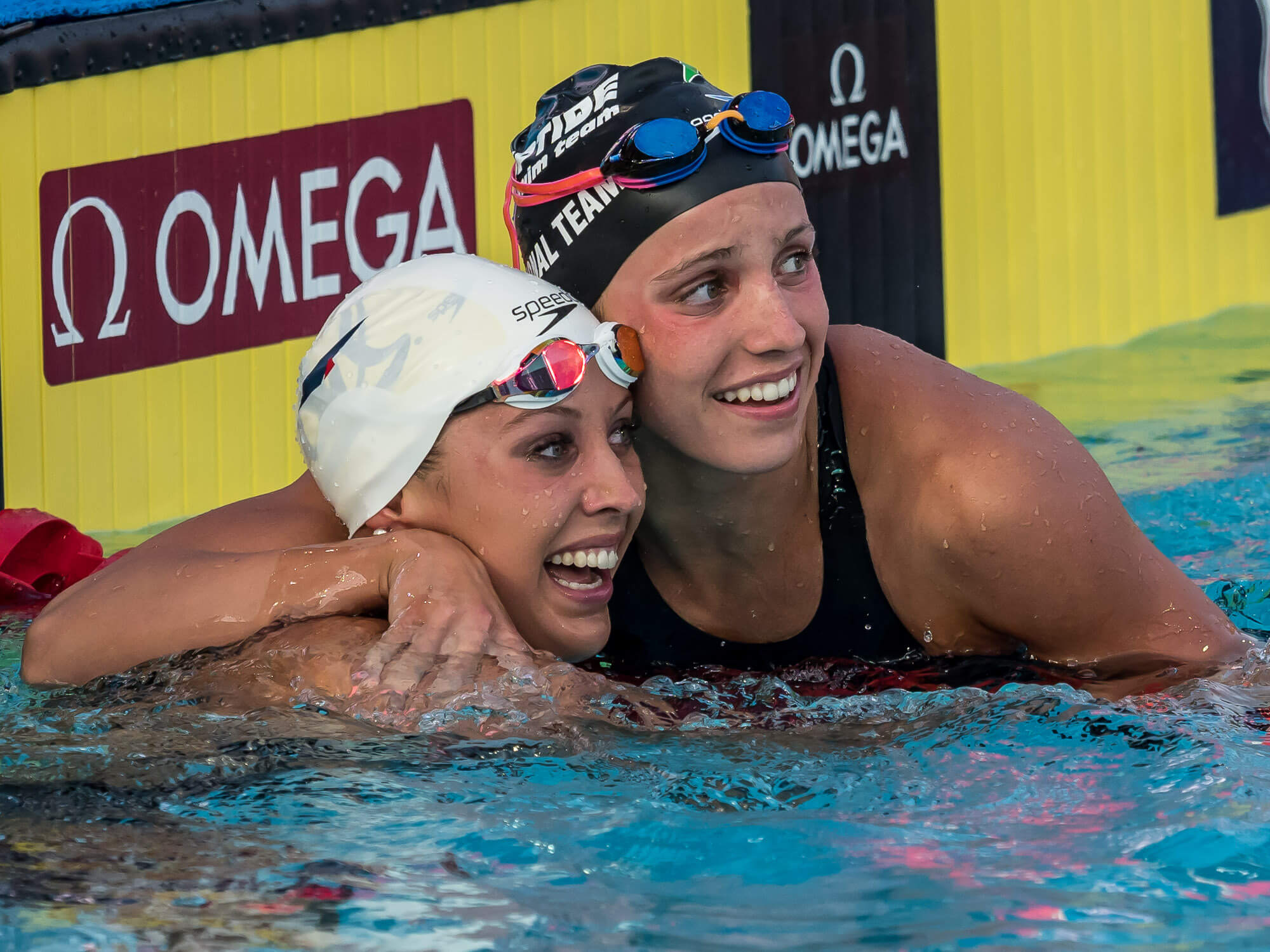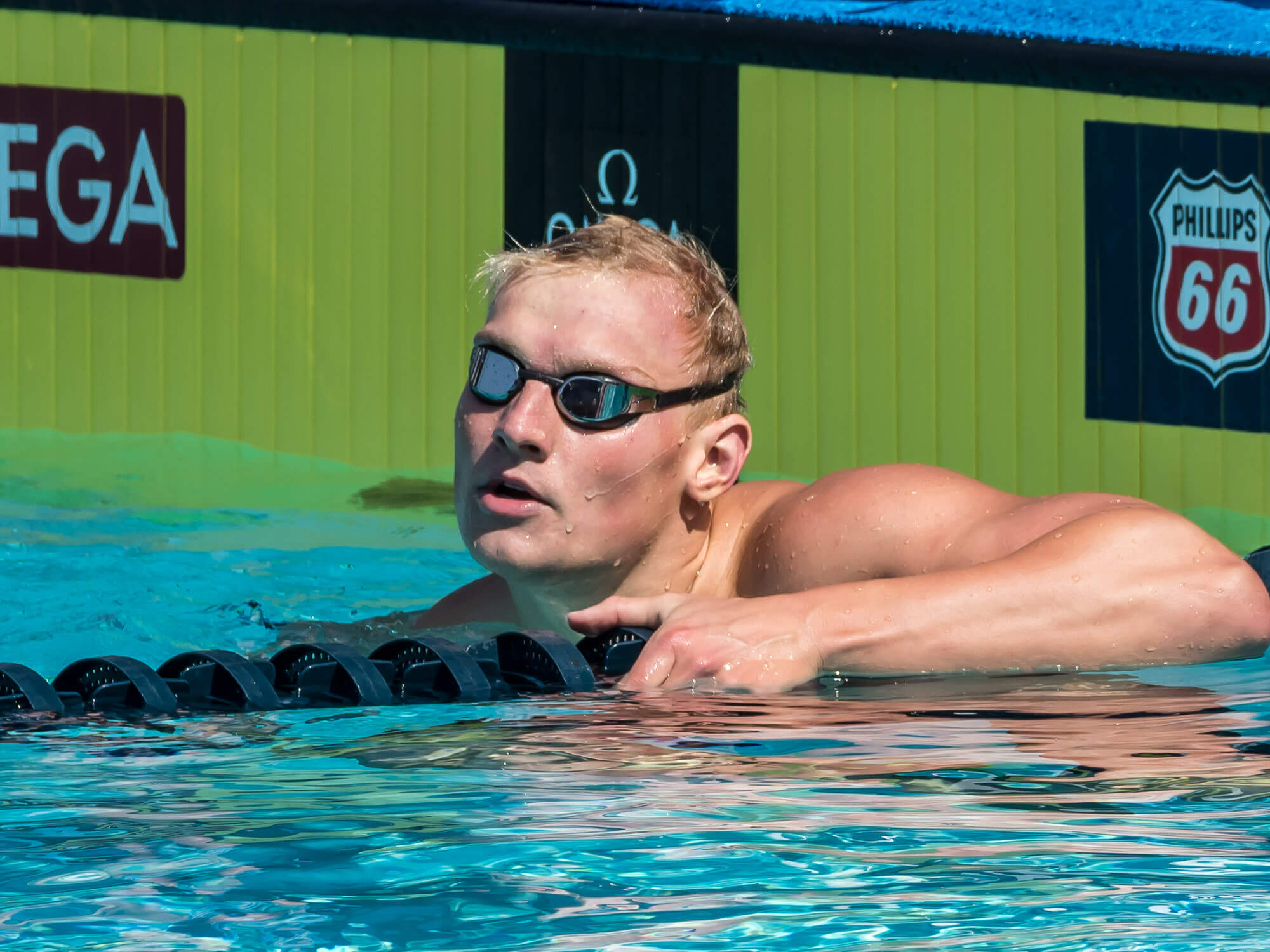What Regan Smith’s Stunning Sectionals Means for the World

Editorial Content for Speedo Sectional Series is sponsored by Speedo. Visit Speedo Today
Sunday evening at Sectionals invokes images of a sparsely-populated pool deck with heavily-scratched finals. Worn-out swimmers are counting down the minutes until meet’s end while considering their options for a post-meet splurge meal. Parents and coaches have their minds on the impending trip home.
Not typically the time for a 17-year-old high school junior to become the fastest female short course backstroker in history. But that’s exactly what happened in the span of an hour Sunday evening in Cary, N.C.
Regan Smith had been skirting American records all weekend long, missing Beata Nelson’s 100 back record Saturday by seven hundredths in prelims (49.74) and then a tenth in finals (49.77). But on Sunday, she topped Kathleen Baker’s American record in the 200 back with a 1:47.16 before leading off Riptide’s 400 medley relay in 49.66, one hundredth under the Nelson record.

Kathleen Baker & Regan Smith — Photo Courtesy: Peter H. Bick
Two remarkable efforts, especially when one considers recent history. Baker’s record lasted just one year after she swam a 1:47.30 on the way to winning last year’s NCAA title, much quicker than the best efforts of previous Golden Bears Elizabeth Pelton (1:47.84) and Missy Franklin (1:47.91).
As for the 100 back, Natalie Coughlin held that record and the distinction as the only woman under 50 seconds for 15 years before Ally Howe blasted a shocking 49.69 at the 2017 Pac-12 Championships. Nelson beat that mark by two hundredths this past fall at the Texas Invitational.
And now, Smith has swum faster than any of them.
So what should we make of that swim? It’s easy to see those times and assume that at this summer’s World Championships in South Korea, Smith will follow in Franklin’s footsteps as a teenage world champion in the 200 back. To that, pump the breaks.
Yes, Smith will be in the mix for a gold medal, but so will Baker, Australia’s Emily Seebohm, Hungary’s Katinka Hosszu and Canada’s Taylor Ruck and Kylie Masse. That was the list of medal contenders for the 200 back last week. It hasn’t changed.
One might argue that the 100 back record is proof that the U.S. should not select its World Championship team one year in advance. Okay, Smith might have a better shot to make the team in that event now, but she could still be the third-fastest American in long course, as she was in 2018. To rank among the top two, Smith would have to beat out either Baker, the world record-holder, or Olivia Smoliga, who won gold in the event at the Short Course World Championships in December.
All we can really take away from Smith’s weekend in Cary is that she turned a routine regional meet into the most exciting Sectionals in years, at least since Ryan Lochte debuted his underwater kicking on his back at the summer Sectional meet in Athens, Ga., in 2015. Consider this: How often are swim fans spending a Saturday afternoon in March geeking out about a prelims race at Sectionals? This past weekend was likely a first for most.
But in the grand scheme of long course and international racing—the endgame for Smith until she enters NCAA competition in the fall of 2020—those records have minimal significance, and they certainly don’t mean that we should expect any more from Smith come July.

Andrew Seliskar — Photo Courtesy: Peter H. Bick
Earlier this winter, Cal men’s coach Dave Durden was discussing standout senior Andrew Seliskar for a story that appeared in the March issue of Swimming World Magazine. Seliskar arrived at Cal in 2015 fresh off a prolific high school career (although with less senior international experience than Smith), and Durden sensed an expectation for Seliskar to continue his progression in a straight-line course.
“Unfortunately, the way our sport has trended over the last 10 to 12 years, there’s been a constant comparison of other athletes or an expectation that’s carried forward as swimmers go from a high school setting into a collegiate setting and subsequently into the international or postgrad professional setting,” Durden said. “It’s almost like it’s never good enough.”
Seliskar had success, but it took him three years to break onto a senior international roster in an event, the 200 free, that had never been considered one of his signature races. That happens sometimes in swimming—circumstances change, and a swimmer’s career may turn out differently than previously expected.
Consider Franklin: No, she never returned to the utterly dominating form that she displayed from 2011 to 2013. Her final career medal tallies may be less than what some expected of her. She is still one of the greatest swimmers in history, and there is no legitimate argument against that.
With Smith, yes, she is a star, and yes, her record-level backstroke plus her skills in butterfly and freestyle make her the most coveted college recruit yet to announce a verbal commitment. Be excited to watch her race on television. Just don’t consider anything less than a world title this year a disappointment.

- 2018 SPEEDO SUMMER SECTIONALS
- 2018 SPEEDO WINTER SECTIONALS
- 2017 SPEEDO WINTER SECTIONALS
- 2019 COLLEGE STATION RESULTS
- 2019 PLANTATION RESULTS
- 2019 COLUMBIA RESULTS
- 2019 CARY RESULTS
- 2019 FEDERAL WAY RESULTS
- 2019 PHOENIX RESULTS
- 2019 ITHACA RESULTS
- 2019 CHRISTIANBURG RESULTS
- 2019 INDIANAPOLIS RESULTS
- 2019 BUFFALO RESULTS
- 2019 ROCHESTER RESULTS




We were there. Was great fun to watch. Excited to see what the future holds for her.